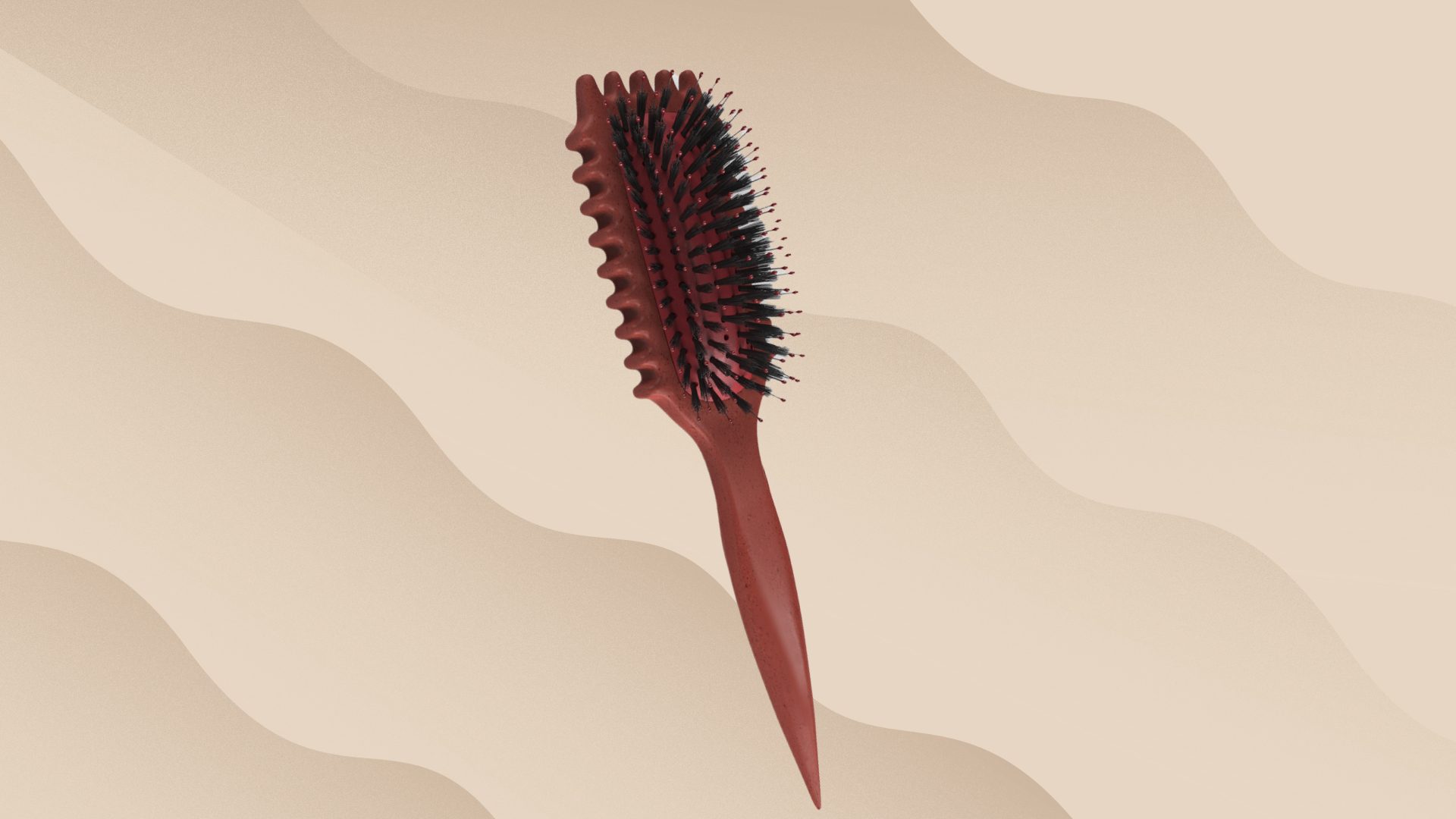
If there is one universal truth for all curlies, it’s our hair falling out whether you are combing it, brushing it, detangling it, or washing it up in the shower. This can commonly be referred to as “shedding” or “fall out” and can happen for a variety of reasons. Whether you have coils, waves, tight textures, or curls, all of our hair strands have an expiration date. This begins with understanding each strand on our head lasts 2-5 years which means there is a continuous growth and death cycle. Our hair goes through three phases called Anagen, Catagen, and Telogen which decribes the growth and fall-out cycle of our hair over a while. The American Academy of Dermatology Association cites that it’s normal for people to lose anywhere from 50-100 hairs a day.
A few common causes of hair shedding, thinning, or fallout can be hereditary, the growth rate of your hair, diet, thyroid disease, and physical stress. While this isn’t a conclusive list, there can also be factors like your styling method, color damage, or the types of products you use. It is normal to have fallout but if you are experiencing any loss, thinning, or fallout in clumps or sections that is resulting in balding, we recommend going to see your doctor. As part of National Hair Loss Awareness Month, we’re continuing the conversation about prevention and education to help with this common issue. We sat down to chat with two haircare experts to get their tips and feedback for helping combat fallout.
The Experts

Felicia Leatherwood, Celebrity Natural Hairstylist
Felicia Leatherwood has been setting trends and breaking boundaries as the Celebrity stylist to stars like Issa Rae, Ava Duvernay, Anthony Anderson, and more. Her expansion into creating her brand led to the “Brush With The Best” Detangling brush which has helped to improve the haircare of curlies everywhere.

Jennifer Nast, Stylist at Sharon Dorram Color at Sally Hershberger Salon
Jennifer Nast is a NYC hair stylist who specializes in giving structural elements to haircuts to make them more dynamic and edgy. With over ten years of experience, her expertise has been featured in mainstream publications like Byrdie, InStyle, and PureWow, and she continues to work with clients at the Sharon Dorram Color at Sally Hershberger Salon.
What causes hair to fall out?
Leatherwood: Your hair falls out for many reasons. It could range from stress, diet, not enough rest,
hormonal imbalances, your adrenals could be off, selecting the wrong products to care
for your hair or simply not setting up a regimen at all to care for your hair.
What are common indicators of hair shedding?
Nast: Common signs of hair shedding are hair in your hair brush, hair in the drain after washing your hair, and loose hair on your shirt.
What are the signs of excessive hair shedding?
Nast: If you start to see an increase in the amount of hair in your brush or drain, you may be experiencing excessive hair loss.
How can you prevent excessive hair shedding?
Leatherwood: If you go down that list and check it off – you have to ask yourself an important question –
Do you have a routine? A must-routine is to regularly shampoo, condition, deep condition and hydrate your hair, at the same time, in the same places every few weeks. Pardon My Fro’s Moisturizing Hair Milk, Curl Enhancing Hair Cream, Mousse, and Detangler Leave-in Conditioner provides Hydration depending on hair type and style desired.
Nast: Many things can trigger excessive hair loss (hormonal changes, health, and stress to name a few). You can help slow and possibly prevent excessive shedding by adding a hair supplement to your diet.
What types of treatments can reduce hair shedding?







Leatherwood: Healthy hair starts within. Drinking water and hydrating yourself from the inside out is key to growth. Your lifestyle and eating habits play an important role in the health of the hair. You have to ask yourself a few questions – do you intake a lot of salt or sugar? Or do you balance it with a pretty good lean diet? Are you getting enough rest? 6, 7 hours or more rest is ideal. Are you having positive thoughts? Essentially, are you stressing yourself out by thinking the same thing over and over again? These real-life factors can aid in hair growth or hair loss.
Also based on ongoing research, since the pandemic, many people who ended up having COVID-19 had hair loss 6 months to a year later. It’s a possibility that if you’ve had COVID, the follicle needs oxygen and a few more nutrients that are missing because of COVID-19.
Nast: Treatment for excessive shedding can include adding more protein to your diet. Taking a daily hair supplement and/or hair treatments like shampoos and other topical treatments. There are also lots of hair growth systems available (Philip Kingsley and Harklinikken).







